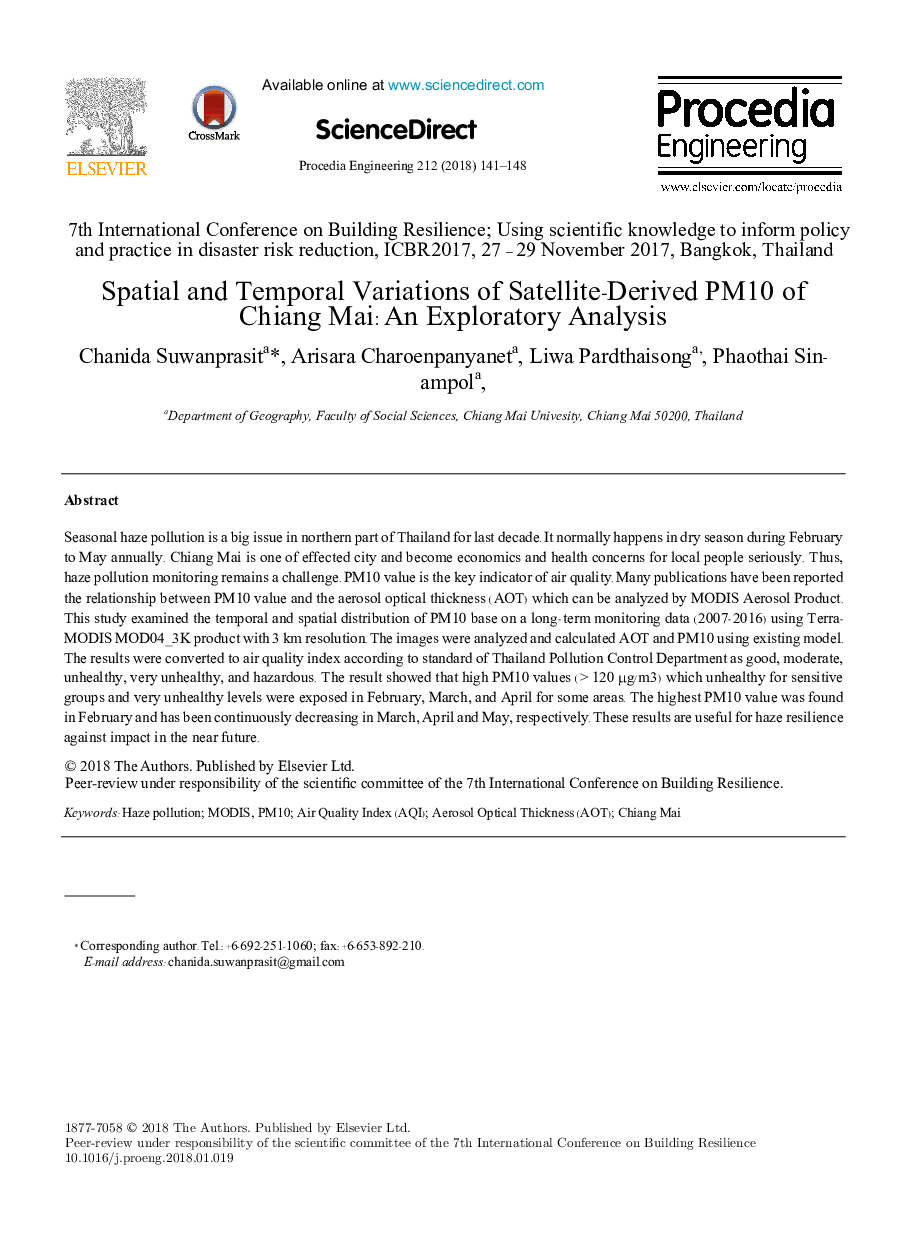| Article ID | Journal | Published Year | Pages | File Type |
|---|---|---|---|---|
| 7225881 | Procedia Engineering | 2018 | 8 Pages |
Abstract
Seasonal haze pollution is a big issue in northern part of Thailand for last decade. It normally happens in dry season during February to May annually. Chiang Mai is one of effected city and become economics and health concerns for local people seriously. Thus, haze pollution monitoring remains a challenge. PM10 value is the key indicator of air quality. Many publications have been reported the relationship between PM10 value and the aerosol optical thickness (AOT) which can be analyzed by MODIS Aerosol Product. This study examined the temporal and spatial distribution of PM10 base on a long-term monitoring data (2007-2016) using Terra-MODIS MOD04_3K product with 3 km resolution. The images were analyzed and calculated AOT and PM10 using existing model. The results were converted to air quality index according to standard of Thailand Pollution Control Department as good, moderate, unhealthy, very unhealthy, and hazardous. The result showed that high PM10 values (> 120 µg/m3) which unhealthy for sensitive groups and very unhealthy levels were exposed in February, March, and April for some areas. The highest PM10 value was found in February and has been continuously decreasing in March, April and May, respectively. These results are useful for haze resilience against impact in the near future.
Related Topics
Physical Sciences and Engineering
Engineering
Engineering (General)
Authors
Chanida Suwanprasit, Arisara Charoenpanyanet, Liwa Pardthaisong, Phaothai Sin-ampol,
